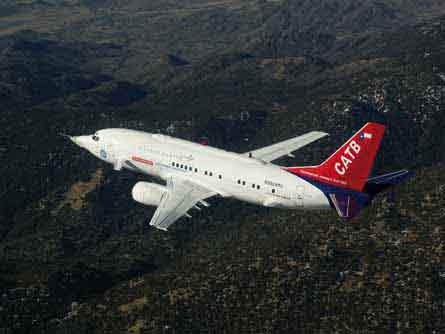The Joint Strike Fighter co-operative avionics testbed - or CAT-Bird - will be delivered to Lockheed Martin by mid-year. The ex-airline Boeing 737-300 made its first flight from Mojave, California on 23 January after being modified into a flying laboratory by BAE Systems.
After a month-long initial test series of about 20 flights to evaluate performance and flying qualities, the CAT-Bird will be grounded for three months to complete equipment installation. "Structurally the aircraft is 100% complete inside is about 40% populated," says John Wall, BAE programme director.
Modifying the 737 has taken almost three years. "It was much more complex, and took longer, than expected," says Wall. "There are 22 miles [35km] of wiring and electrical harnesses in the aircraft, which were a challenge to route and separate, as we ran out of real estate."
Externally, the 737 has been modified with the F-35's forebody on the nose, a 12.8m (42ft)-long spine on top and 3.1m canoe underneath the fuselage, and twin 3.7m sensor wings that replicate the F-35's leading and trailing edges with embedded apertures. Inside, it will have 20 workstations and an F-35 cockpit.
After installation is complete, another three weeks of flight testing from Mojave are planned for May or June, Wall says. The CAT-Bird will then be delivered to Lockheed's Fort Worth, Texas plant to begin wringing out each block of mission-system software before it is released to the F-35 test fleet.
|
|---|
The modified Boeing 737-300 will be delivered to Lockheed in mid-2008 |
Source: Flight International
























